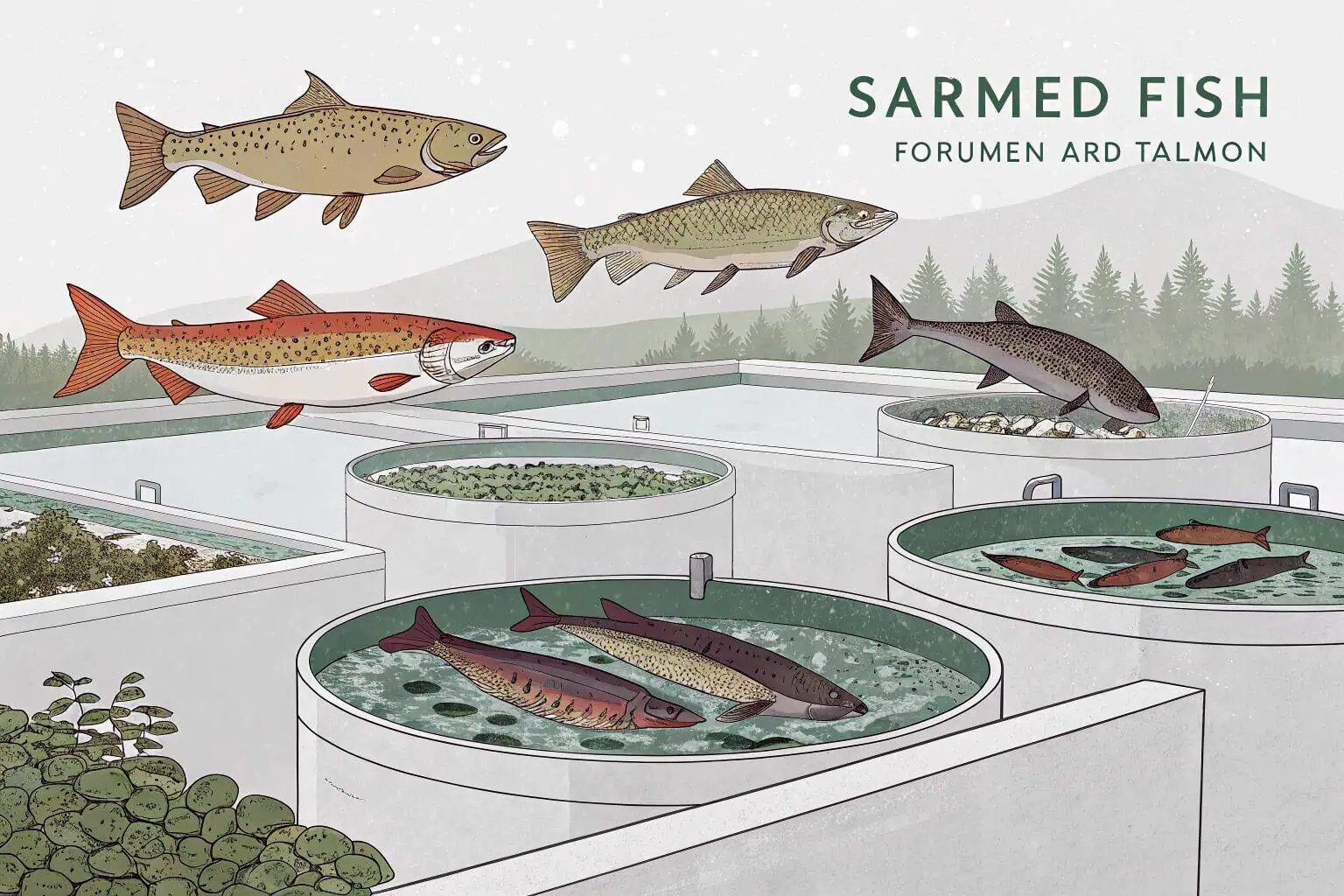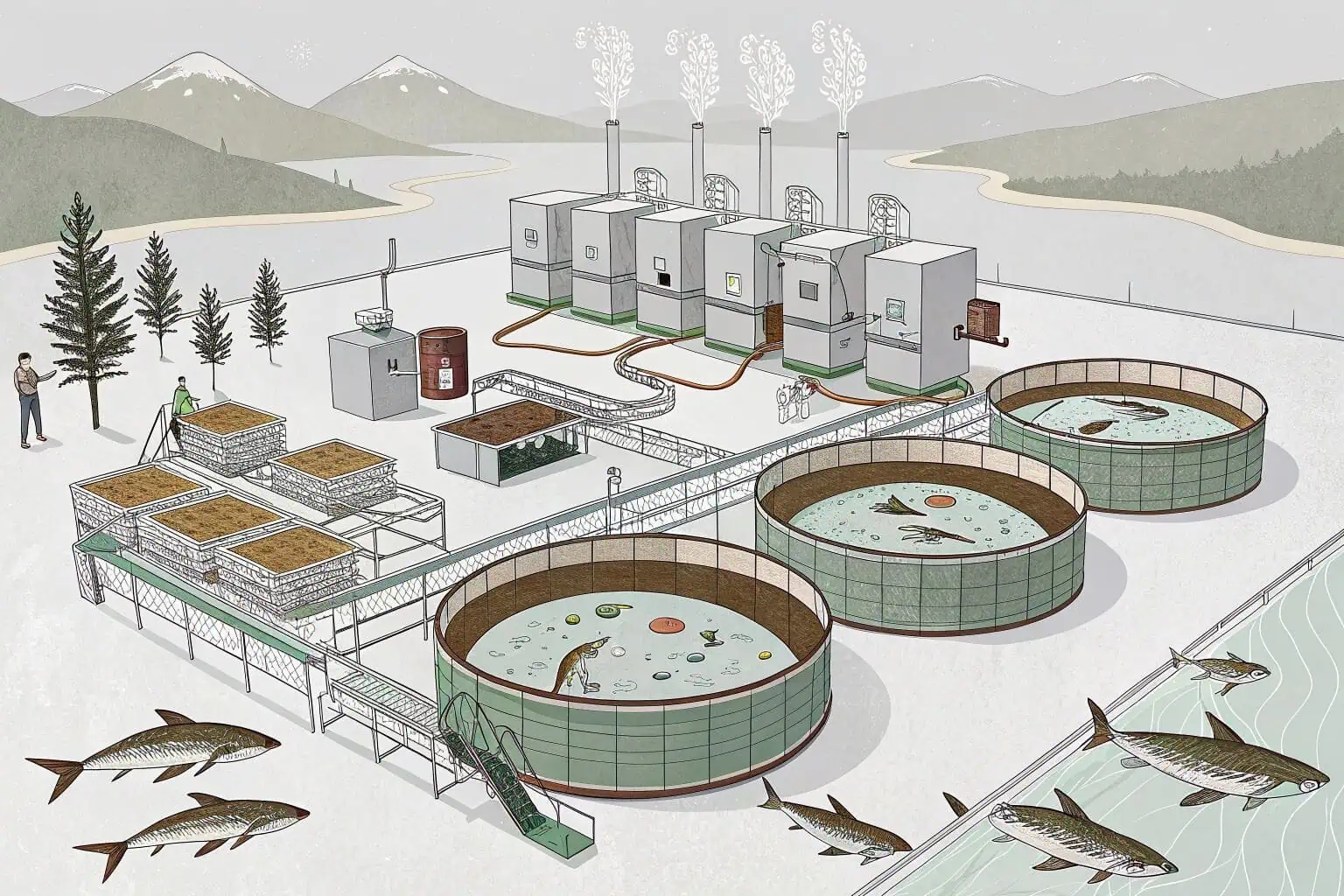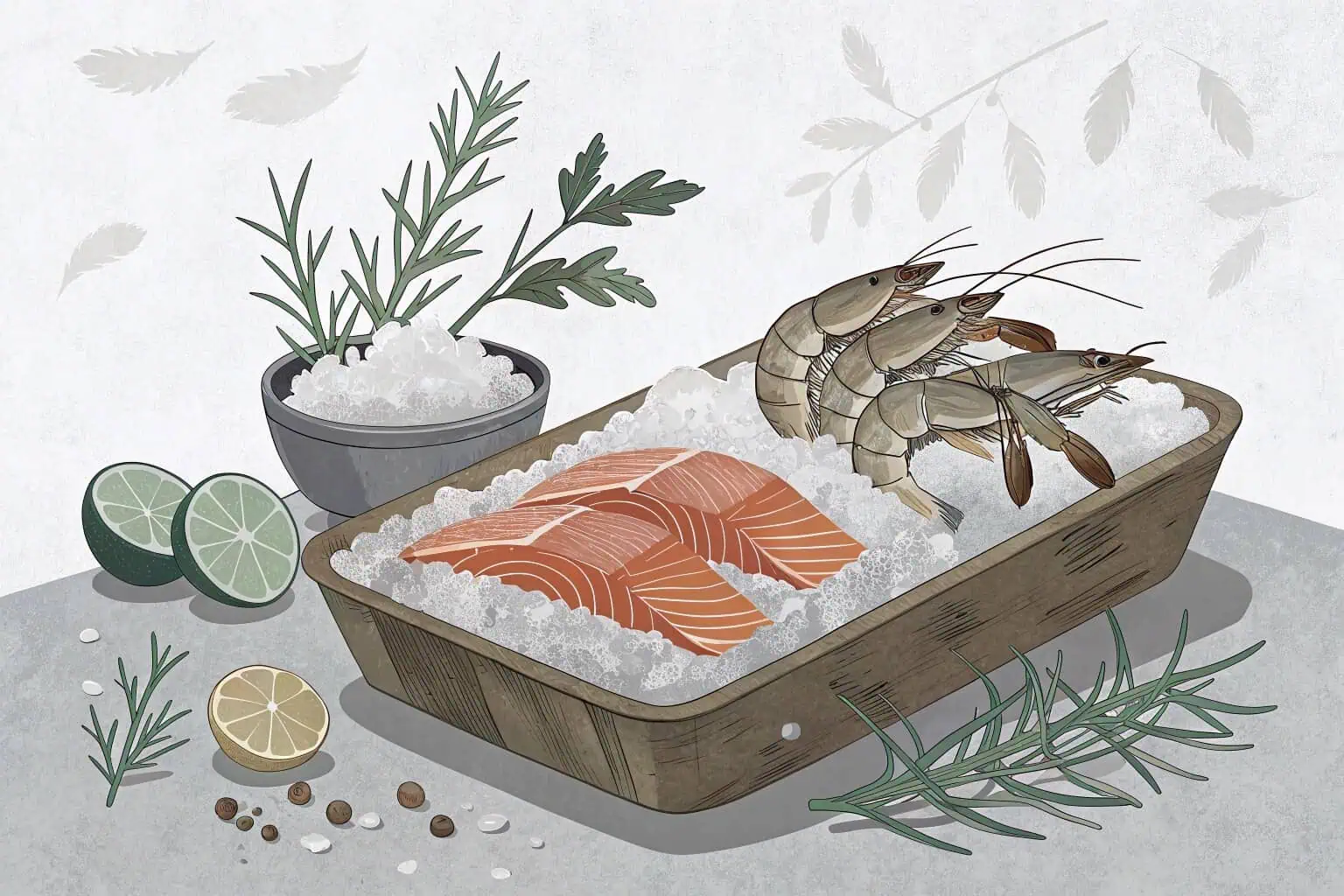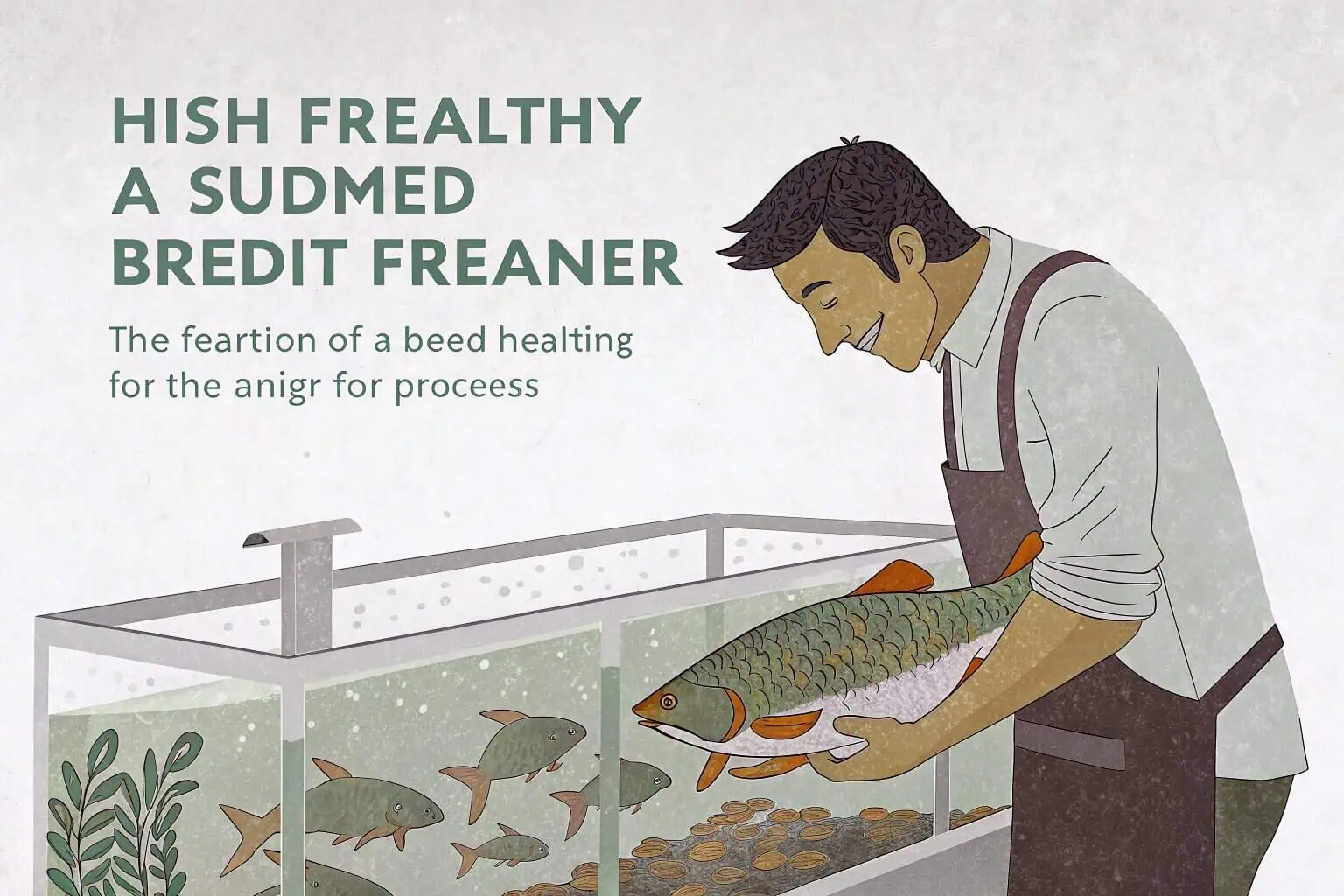Which fish farming is most profitable?
Struggling to find a profitable venture? Fish farming offers huge potential but choosing the right fish is key to unlocking those returns for your efforts.
The most profitable fish farming often involves high-demand, high-value species like salmon or trout, balanced with manageable operational costs and strong market access for consistent sales.

Making money in fish farming isn't just about picking a popular fish. It's about understanding the whole picture, from initial investment to market sales. Let's explore what makes a fish farming venture truly successful and how you can navigate this booming industry to find your profitable niche.
Which fish is easiest to farm?
New to fish farming? Worried about complex setups and steep learning curves? Some fish are surprisingly simple to raise, making them perfect for beginners entering the aquaculture world.
Tilapia is widely considered one ofesthe easi fish to farm due to its hardiness, rapid growth, and tolerance for varied water conditions and feed types.

When I first thought about fish farming, the idea of managing delicate species was daunting. I read a lot about Tilapia. Their ability to thrive even when I was learning the ropes was a big plus. I remember talking to an experienced farmer who said, "If you can keep Tilapia, you can learn to keep anything." That gave me the confidence to start. For a beginner, minimizing initial challenges is crucial. Tilapia offers that by being forgiving of minor mistakes in water quality or feeding schedules. This allows new farmers to focus on learning the business side, marketing, and basic husbandry without the added stress of a very demanding species. This smoother entry can make the difference between sticking with it and giving up early. Many potential fish farmers, especially those I've spoken to who are considering our Bancy collapsible fish tanks1 for their first venture, appreciate species that don't require a PhD in marine biology to keep alive. The ease of Tilapia farming means lower initial stress and a quicker path to understanding the fundamentals of aquaculture, building a solid foundation for future expansion or diversification into other species.
Why is Tilapia a Great Starter Fish?
Tilapia stands out for several reasons, making it an excellent choice for those new to the aquaculture scene. Their natural resilience means they can tolerate fluctuations in water parameters like oxygen levels and temperature better than many other species. This forgiving nature is a significant advantage when you're still mastering water quality management. Furthermore, their diet is incredibly versatile; they are omnivores and can thrive on a range of feeds, including plant-based options, which can help manage operational costs. Their rapid growth cycle2 also means a quicker turnaround from fingerling to market size, allowing for faster returns on investment and more learning cycles in a shorter period.
What About Other Easy Options?
While Tilapia often tops the list, other species are also known for their ease of farming. Catfish3, for instance, are very hardy and can be raised in high densities. They are popular in many regional markets and adapt well to various farming systems, including ponds and tanks. Carp4, including common carp and various Asian carp species, are another group known for their adaptability and tolerance to a wide range of environmental conditions. They have been farmed for centuries in many parts of the world and can be a good option, particularly if there's an established local market for them. Each of these species has its own set of manageable characteristics that can make the entry into fish farming less intimidating and more achievable for newcomers.
What type of fishing is most profitable?
Dreaming of big returns from the water? Not all fishing or aquaculture ventures are created equal when it comes to the bottom line. Some methods and species consistently bring in more cash.
Aquaculture, specifically farming high-value species like salmon, tuna, or shrimp in controlled environments, tends to be more consistently profitable than wild-catch fishing due to better control.

I've seen friends in the traditional fishing industry face so much uncertainty. One year, a great catch, the next, new regulations or poor stocks hit them hard. That's what drew me to aquaculture5. The idea of building a sustainable, predictable business was appealing. For example, with our Bancy collapsible fish tanks, we can help farmers set up systems that optimize space and resources, offering better control over the growing environment.This control is key. While the initial setup for, say, a salmon farm is significant, the market price for salmon is consistently high. It's about a long-term investment in a system that can reliably produce a valuable product, shielding the business from the volatility of wild fisheries and ensuring a more stable income stream. This predictability is what I believe makes aquaculture, especially for sought-after species, the more profitable route in the long run, particularly for investors and existing farmers looking to scale or improve their operations.
Why Aquaculture Often Wins in Profitability?
Aquaculture provides a level of control that wild-catch fishing6 simply cannot match. As a farmer, you manage the entire lifecycle: from breeding and stocking to feeding and harvesting. This allows for strategic planning and optimization of growth rates and production schedules. You can tailor the environment to the specific needs of the species, minimizing stress and maximizing health, which translates to better quality products. Consistency in supply is another major advantage. Wild fisheries are subject to natural fluctuations, fishing quotas, and weather disruptions. Aquaculture can provide a more stable and predictable supply to the market, which is highly valued by buyers and can lead to better pricing power. Furthermore, aquaculture allows for targeted production of high-value species7 that might be overfished or difficult to source reliably from the wild, directly catering to specific market demands.
Comparing Risks and Rewards: Aquaculture vs. Wild-Catch
| Feature | Aquaculture | Wild-Catch Fishing |
|---|---|---|
| Control | High (environment, feeding, stocking)8 | Low (weather, stocks, regulations) |
| Consistency | High (predictable supply) | Low (variable catches, seasonal) |
| Initial Cost | Often higher (infrastructure, broodstock) | Can be lower, but vessel/gear costs are high |
| Operational Risk | Disease, system failure | Fuel prices, gear loss, poor catch |
| Market Access | Can target specific markets, build brands | Often reliant on existing supply chains |
| Sustainability | Can be highly sustainable with good practices | Faces challenges of overfishing, bycatch9 |
While wild-catch fishing can offer high rewards during peak seasons or for specific valuable catches, it also carries significant risks and unpredictability. Fuel costs, stringent regulations, and declining wild stocks can severely impact profitability. Aquaculture, despite requiring a potentially larger upfront investment in infrastructure like ponds or specialized tanks (such as our Bancy galvanized sheet fish tanks for durability), offers a more controlled path to profitability through consistent production and the ability to cultivate species that command premium prices.
Which fish is most in demand?
Want to ensure your farmed fish sell quickly and for a good price? Knowing what consumers and markets crave is vital. Some fish are always popular on dinner plates worldwide.
Globally, salmon and shrimp consistently rank among the most in-demand seafood, driven by their taste, versatility in cooking, and perceived health benefits by consumers.

I always look at market trends. The global demand for seafood10 is rising, and that's a fact. When I consider what fish to focus on, I think about what people are actually buying and eating regularly. Salmon is a powerhouse. You see it everywhere, from high-end restaurants to supermarket freezers, driven by health trends and its appealing taste. Shrimp is another giant. The convenience and the way it fits into so many meals make it a constant seller. As a B2B supplier with Bancy, we see demand for tanks suitable for various species11, but the inquiries for systems that can support these high-demand fish are always strong. It’s not just about what’s easy to grow, but what has a ready and eager market waiting, ensuring quicker sales and better cash flow for the farmer. This is a key consideration for potential investors and existing fish farmers alike; aligning production with strong consumer demand12 is fundamental to business success.
Why Salmon and Shrimp Lead the Pack?
Salmon's popularity stems from its rich flavor, firm texture, and high content of Omega-3 fatty acids13, which are widely promoted for their health benefits. It's incredibly versatile, suitable for grilling, baking, smoking, and raw preparations like sushi. This adaptability makes it a favorite in both home kitchens and restaurants. Shrimp, on the other hand, offers unparalleled convenience and a mild, sweet taste that appeals to a broad audience. It cooks quickly and is a staple ingredient in cuisines across the globe, from Asian stir-fries to Mediterranean pasta and American shrimp cocktails. The sheer volume of shrimp14 consumed globally makes it a massive market. Both species benefit from strong marketing and widespread availability, further cementing their position as top-demand seafood items.
Understanding Regional Preferences and Niche Markets
While salmon and shrimp enjoy broad global appeal, regional preferences play a significant role in demand for other species. For example, Tilapia has very high demand in many developing countries and is also a top consumed fish in the United States due to its mild flavor and affordable price point. Tuna remains a global favorite, especially for canning and the booming sushi market. In many Western countries, whitefish like Cod and Haddock15 are staples, particularly for traditional dishes like fish and chips. For a fish farmer, understanding these local and regional nuances is crucial. It might be more profitable to farm a species that has strong local demand and an established supply chain, even if it's not a global superstar. Identifying a niche market16, perhaps for an organically raised local species or a fish prized in a specific cuisine, can also be a very successful strategy.
What is the best fish to breed for profit?
Aiming for maximum profit in your fish farming venture? The "best" fish isn't just one type; it's a careful balance of high market value with manageable breeding and rearing costs.
The best fish to breed for profit often combines high market demand (like salmon or trout), good growth rates, efficient feed conversion, and manageable farming costs within your specific setup.

When I think about "best for profit," it's a calculation. I might look at salmon and see the high selling price. But then I factor in the cost of specialized feed, the need for cooler water, and the longer growth cycle. Then I look at something like Tilapia. The price per kilo is lower, but they grow fast, eat almost anything, and I can use simpler systems like Bancy's collapsible plastic fish tanks. The profit margin per fish17 might be smaller, but the turnover can be quicker and the volume higher with less risk. For an investor, it might be about diversifying – perhaps some high-value, higher-risk species, and some lower-value, lower-risk, high-volume species. For existing farmers, it might be about optimizing their current setup for a fish that gives them the best return on their specific infrastructure and expertise. It's not a one-size-fits-all answer; it requires careful consideration of your resources, market, and business goals. For instance, our clients using Bancy's galvanized pipe fish tanks for more robust setups might lean towards species that benefit from that sturdier environment, potentially fetching higher prices.
Key Factors Determining Profitability in Fish Breeding
Several interconnected factors determine which fish will be most profitable for your specific operation:
- Market Price: This is fundamental. What can you realistically sell your fish for per kilogram or pound? High-value species naturally offer higher revenue potential.
- Growth Rate: How quickly does the fish reach a marketable size? Faster growth means more production cycles per year and quicker returns on investment.
- Feed Conversion Ratio (FCR)18: This measures how efficiently the fish converts feed into body mass. A lower FCR means lower feed costs, which are often the largest operational expense.
- Input Costs19: Beyond feed, consider costs for fingerlings, energy (for pumps, heaters, chillers), labor, water treatment, and infrastructure (tanks, nets, etc.).
- Disease Resistance & Hardiness20: Species that are more resistant to common diseases and tolerant of variations in water quality will result in lower mortality rates and reduced veterinary expenses.
- Breeding Difficulty & Fingerling Availability: How easy is it to breed the species yourself, or how readily available and affordable are fingerlings from hatcheries?
Comparing Potential High-Profit Species
| Species | Market Value | Growth Rate | FCR (Typical) | Input Costs | Farming Difficulty | Potential for Bancy Tanks |
|---|---|---|---|---|---|---|
| Salmon | Very High | Moderate | 1.2-1.5 | High | High | Specialized, larger systems |
| Trout | High | Fast | 1.0-1.5 | Moderate | Moderate | Yes, various sizes |
| Barramundi | High | Very Fast | 1.0-1.6 | Moderate | Moderate-High | Yes, especially grow-out |
| Tilapia21 | Moderate | Very Fast | 1.5-2.0 | Low | Low | Excellent, all types |
| Shrimp | Very High | Fast | 1.2-1.8 | Moderate-High | Moderate-High | Yes, with modifications |
For example, while Salmon commands a premium, its high input costs and technical demands might not suit every farmer. Tilapia, with its lower market value, can be highly profitable due to its rapid growth, low input costs, and ease of farming, especially when aiming for high-volume production. Our Bancy collapsible fish tanks are particularly well-suited for Tilapia due to their affordability and ease of setup, allowing farmers to scale production efficiently. The choice depends on a thorough business plan and assessment of your capabilities and market opportunities.
Conclusion
Choosing the right fish is your first crucial step to a profitable fish farming business. Understand your market, available resources, and specific business goals to make an informed decision.
-
Discover the best collapsible fish tanks available, including Bancy, to make your fish farming journey easier and more efficient. ↩
-
Exploring the benefits of tilapia's rapid growth cycle can provide insights into maximizing your investment and operational efficiency. ↩
-
Explore the advantages of Catfish farming, including their hardiness and adaptability, which can help you succeed in aquaculture. ↩
-
Learn about the centuries-old practices of Carp farming and how they can thrive in various environments, making them a viable option for fish farming. ↩
-
Exploring this resource will provide insights into how aquaculture can create a more stable and sustainable fishing industry. ↩
-
Learn about the challenges and ecological effects of wild-catch fishing to appreciate the need for sustainable practices in the industry. ↩
-
Discover which high-value species are cultivated in aquaculture and their significance in meeting market demands and sustainability. ↩
-
Understanding the benefits of high control in aquaculture can help you appreciate its advantages over wild-catch fishing. ↩
-
Learning about the sustainability challenges in wild-catch fishing can inform better choices for seafood consumption. ↩
-
Understanding global seafood demand trends can help you align your business strategy with market needs. ↩
-
Explore the best tank options to support diverse seafood species and enhance your aquaculture operations. ↩
-
Learn strategies to align production with consumer demand, ensuring business success in the seafood industry. ↩
-
Discover the numerous health benefits of Omega-3 fatty acids, essential for heart health and overall well-being. ↩
-
Explore the versatility of shrimp in various cuisines and learn why it's a favorite worldwide. ↩
-
Discover the reasons behind the popularity of Cod and Haddock in Western cuisine, particularly in traditional dishes like fish and chips. ↩
-
Learn strategies for identifying niche markets in fish farming, which can lead to higher profitability and success. ↩
-
Understanding profit margins is crucial for making informed decisions in aquaculture investments and optimizing returns. ↩
-
Understanding FCR is crucial for optimizing feed efficiency and reducing costs in fish farming. Explore this link for in-depth insights. ↩
-
Discover the various input costs involved in aquaculture to better manage your budget and improve profitability. ↩
-
Learn how selecting disease-resistant species can lower mortality rates and veterinary costs, enhancing your aquaculture success. ↩
-
Discover the advantages of farming Tilapia, including its rapid growth and low input costs, making it a smart choice for farmers. ↩